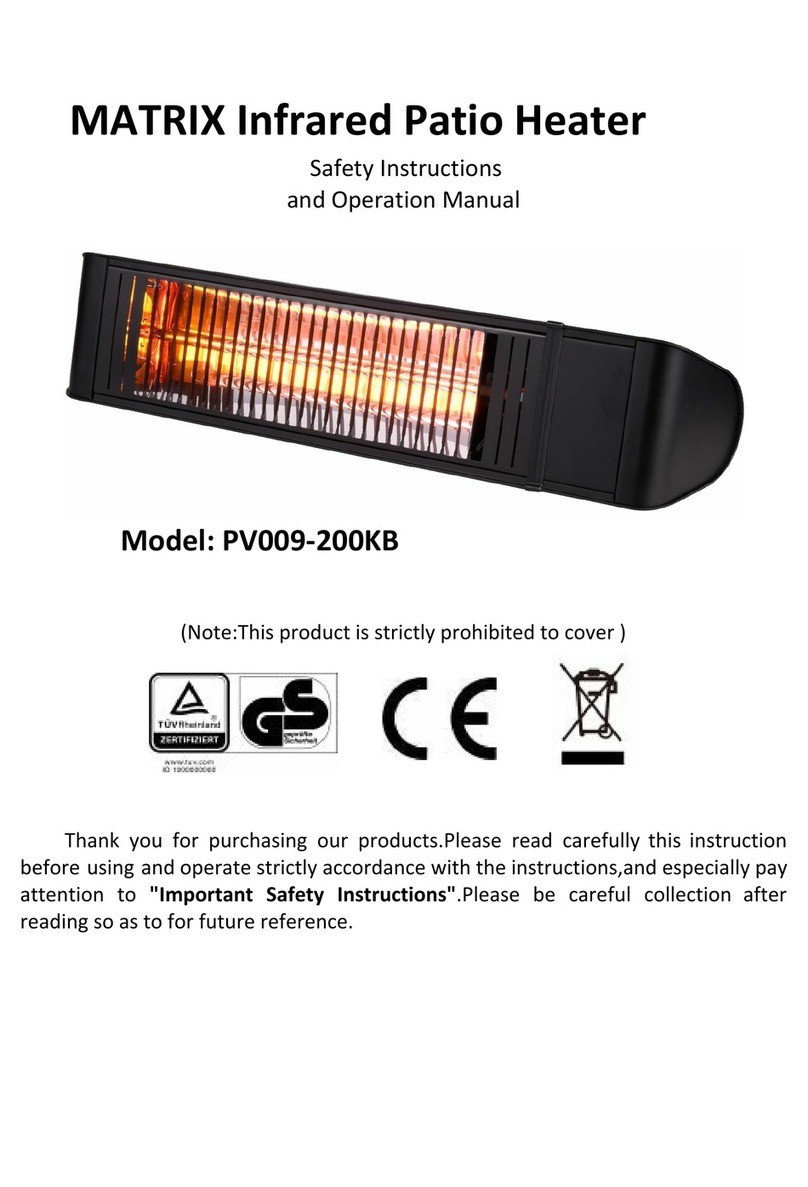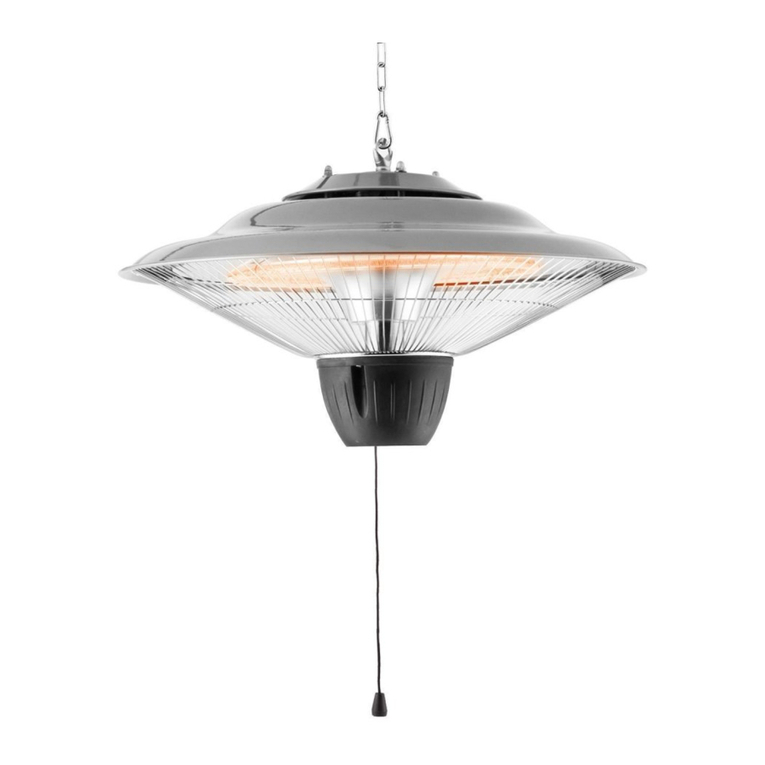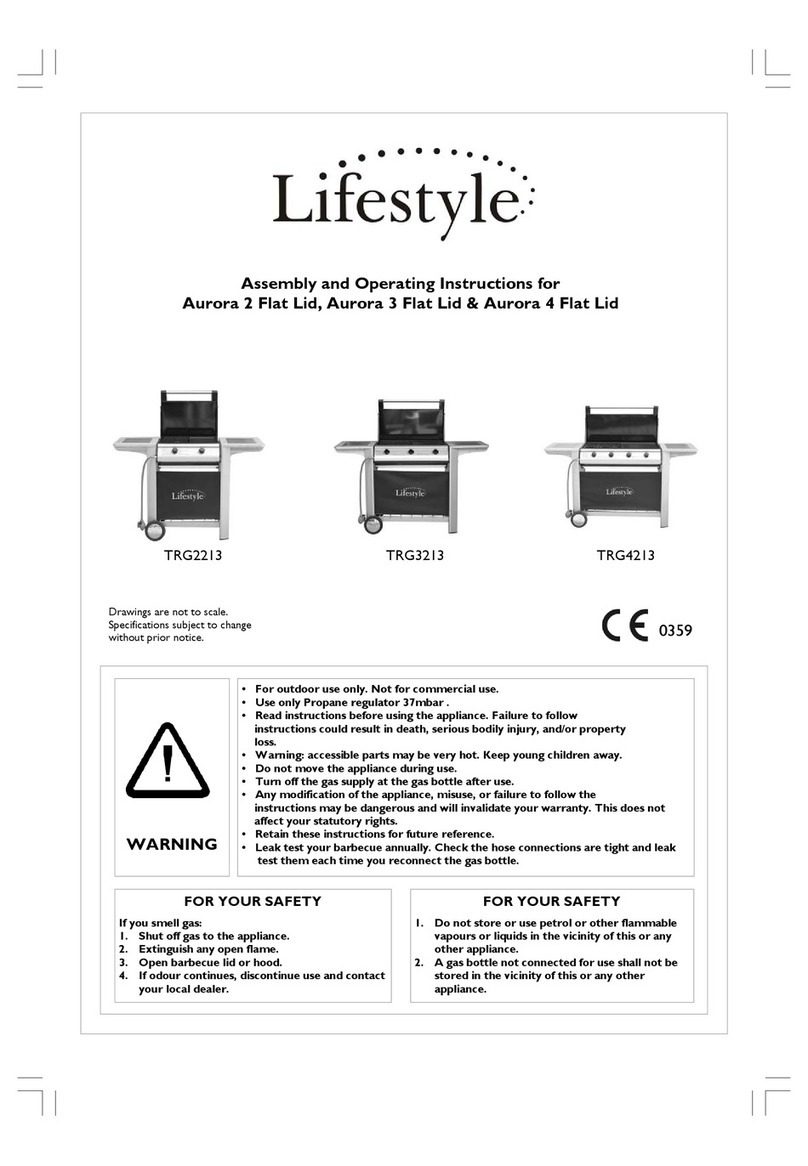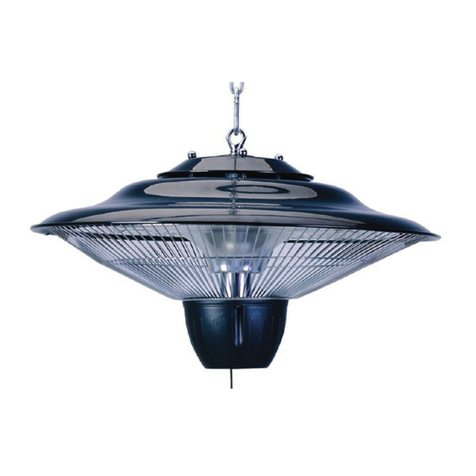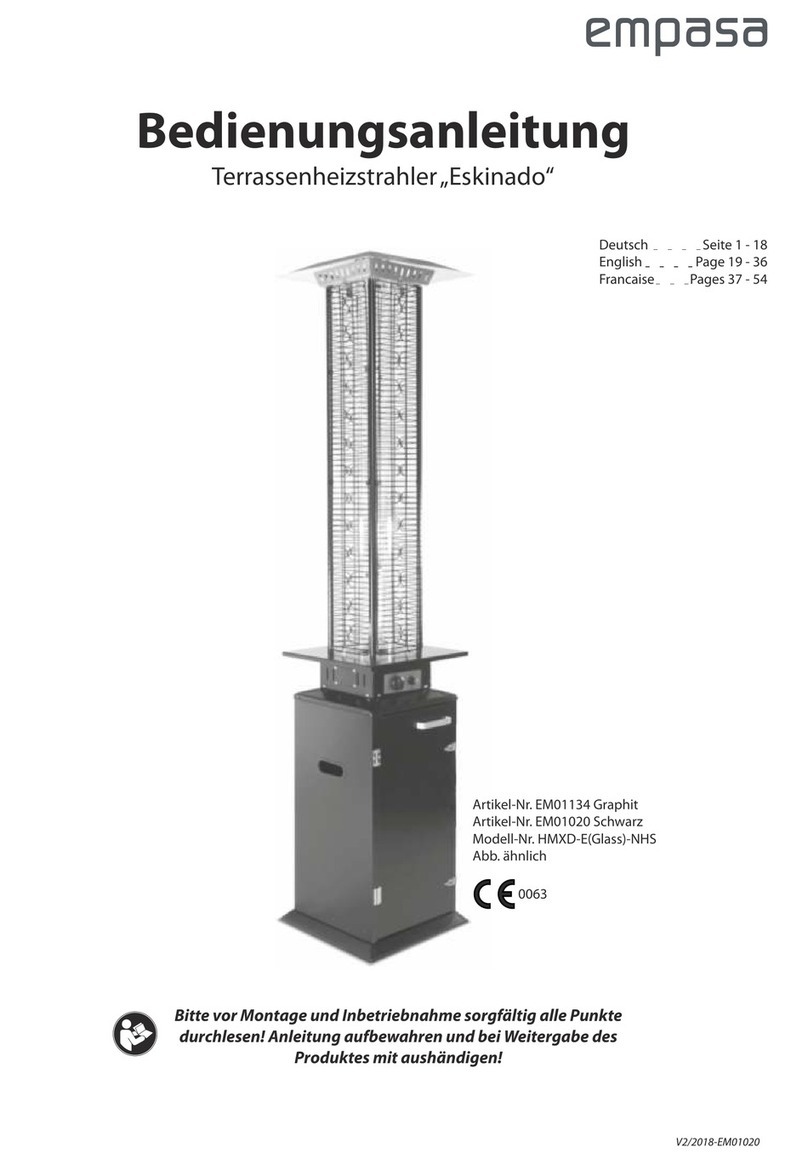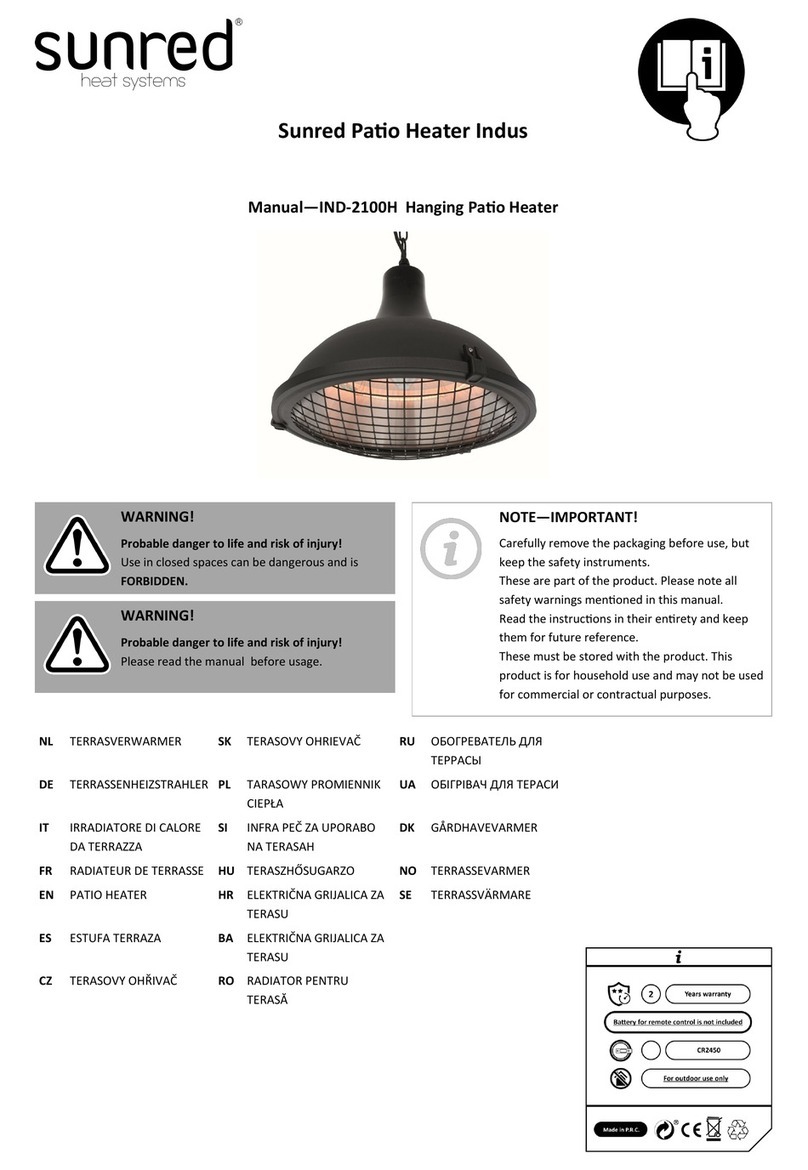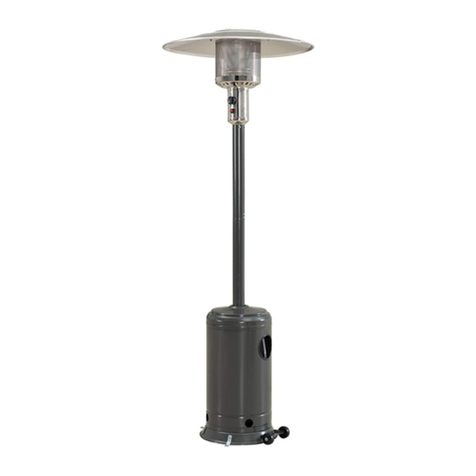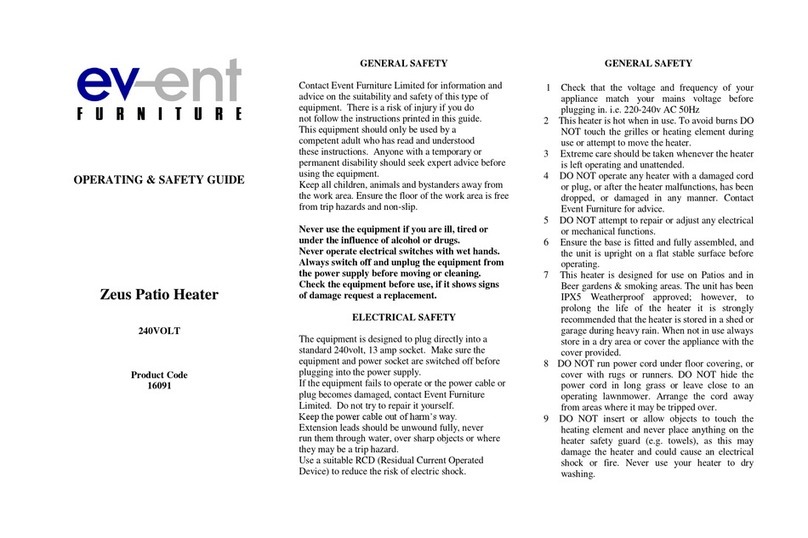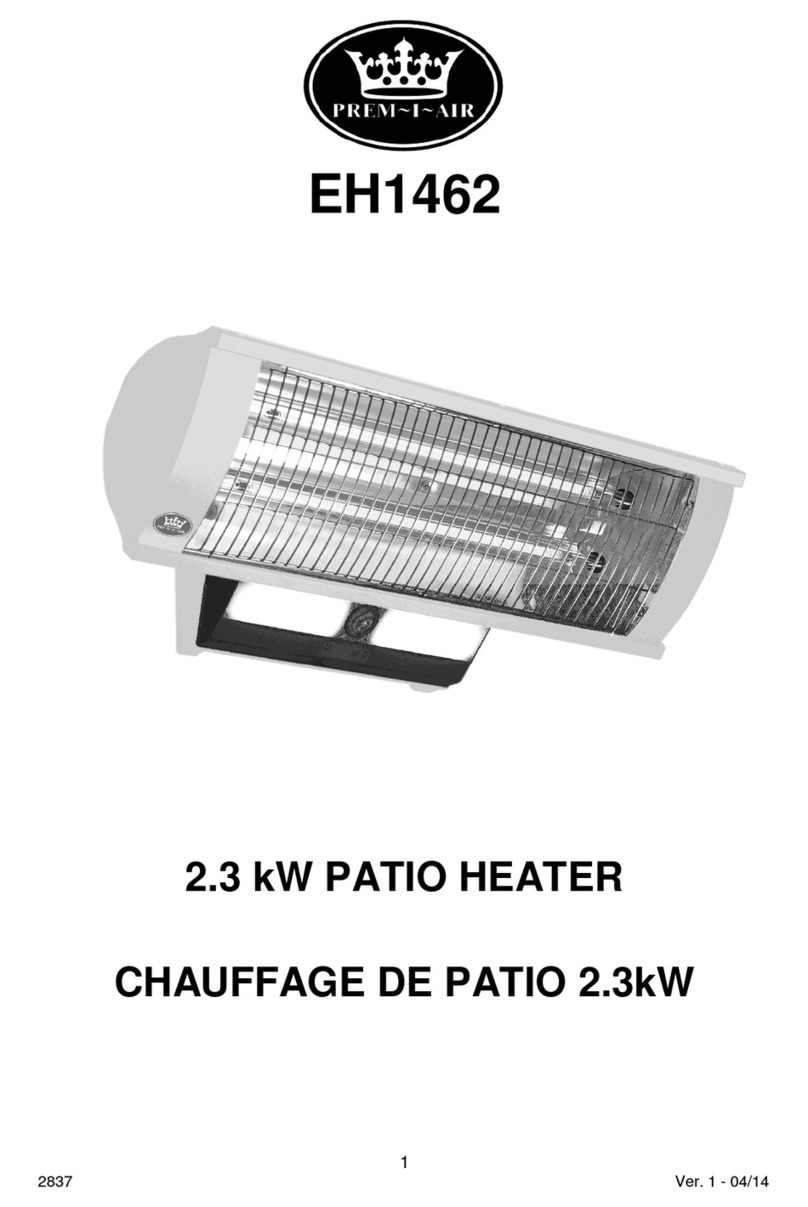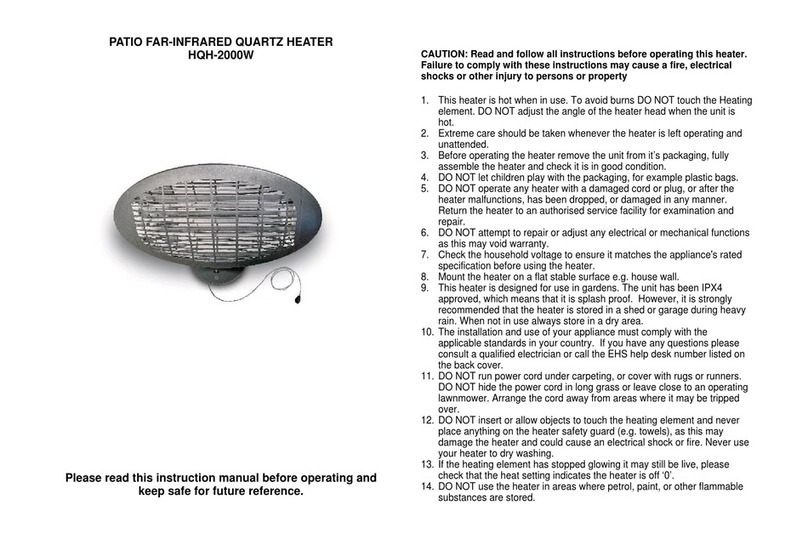PATIO HEATER SAFETY WARNINGS
PLEASE READ THE INSTRUCTIONS CAREFULLY BEFORE INSTALLATION AND USE.
⚫This appliance must only be used outdoors or in a well ventilated area, and must not be installed or used indoors.
⚫To gas cylinder must be changed in a well ventilated area, away from any flammable sources such as candles,
cigarettes,or other naked flames 。
⚫The gas cylinder must be stored outdoors in a well ventilated area.
⚫Storage of this appliance indoors is permissible only if the gas cylinder is disconnected and removed from the
appliance.
⚫Do not move this appliance when in operation, or after it has been turned off before it has cooled down.
⚫Do not attempt to alter the appliance in any manner. Do not paint the radiant screen, control panel or reflector.
⚫Do not obstruct the ventilation holes of the cylinder housing.
⚫The appliance must be installed and the gas cylinder stored in accordance with the local gas regulations.
⚫Shut off the valve at the gas cylinder or the regulator and let the heater cool before moving the appliance.
⚫Use only the type of gas specified by the manufacturer. ( Propane )
⚫Repairs should only be done by a qualified person.
⚫In case of strong winds, particular attention must be taken against tilting of the appliance.
⚫Check that the regulator is correctly fitted to the cylinder and able to fulfil its function.
⚫Close the gas supply at the valve of the gas cylinder or the regulator after use.
⚫Do not use this appliance until all connections have been leak tested.
⚫In the event of gas leakage, the appliance shall not be used or if alight, the gas supply shall be shut off and the
appliance shall be investigated and rectified before it is used again.
⚫Checking the tubing or the flexible hose per month and each time the cylinder is changed.
⚫The tubing or the flexible hose must be changed within one year.
⚫The hose assembly must be replaced prior to the appliance being put into operation if there is evidence of
excessive abrasion or wear, or if the hose is damaged, and that the replacement hose assembly shall be that
specified by the manufacturer.
⚫The heater should be inspected before use and at least annually by a qualified service person. More frequent
cleaning may be required as necessary. It is imperative that control compartment, burners and circulating air
passageways of the appliance be kept clean.
⚫Shut off and check heater immediately if any of the following conditions exist:
The smell of gas in conjunction with extreme yellow tipping of the burner flames.
Heater does not reach a proper temperature. A temperature less than 5℃will cause restricted heat flow and
the appliance will not work properly.
The appliance starts making popping noises during use (a slight popping noise is normal when the appliance
is extinguished).
⚫Any guard or other protective device removed for servicing the heater must be replaced before operating the
heater.
⚫Children and adults should be warned of the hazards of high surface temperatures and should stay away to avoid
burns or clothing ignition.
⚫Young children and pets should be carefully supervised when they are in the area of the heater.
⚫Clothing or other flammable materials should not be hung from the appliance, or placed on or near the appliance.
⚫Certain material or items when stored under or near this appliance will be subjected to radiant heat and could be
seriously damaged.
⚫Do not place articles on or against this appliance.
⚫Do not use or store flammable materials near this appliance.
⚫Do not spray aerosols in the vicinity of this appliance while it is in operation.
⚫Always maintain at least 915mm clearance from combustible materials.
⚫Always position the appliance on a firm level surface.
⚫The use of this appliance in enclosed areas can be dangerous and is PROHIBITED.


